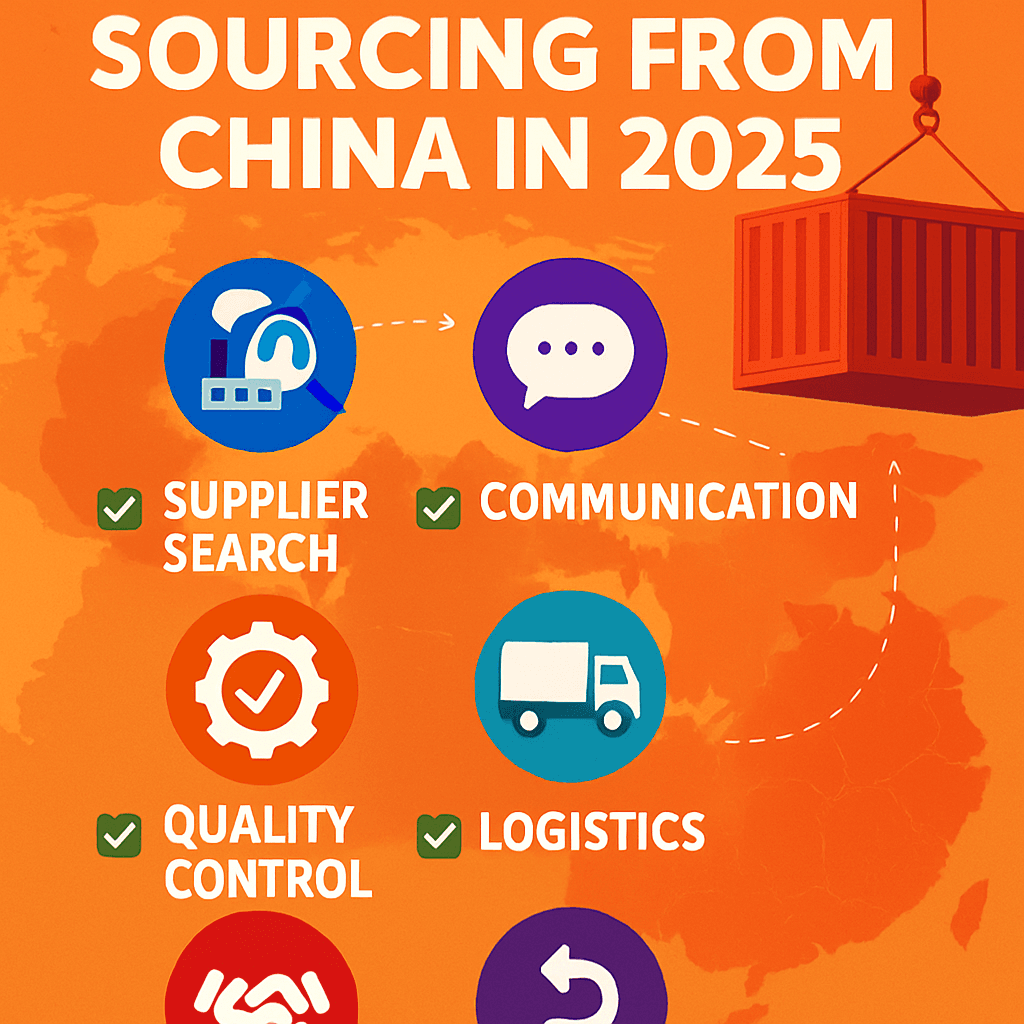How to Source from China in 2025 Without Getting Burned
Published on June 23, 2025 by Oliver Tiedemann

How to Source from China in 2025 Without Getting Burned
Use this checklist to avoid expensive mistakes.
In today’s interconnected global market, sourcing from China presents an incredible opportunity for small to medium-sized companies in Europe. Yet, to transform this potential into profit, businesses must navigate the complexities of trade with caution and diligence. Here’s a concise guide on how to source effectively from China in 2025 without getting burned.
1. Conduct Extensive Supplier Research
Before committing to a supplier, undertake comprehensive due diligence:
Verify Supplier Credentials: Use business directories and platforms such as Alibaba or Global Sources with added scrutiny to verify the legitimacy and quality of suppliers.
Check Certifications: Ensure suppliers have the necessary certifications (e.g., ISO, CE, RoHS) that align with your product requirements.
Investigate Company Background: Look into a supplier’s history, financial stability, and longevity in business.
2. Understand Product Specifications
Precise product specification is crucial:
Document Details: Develop a detailed product specification sheet covering materials, design, packaging, and labeling requirements.
Quality Standards: Clearly communicate the quality standards and testing procedures accepted within your market.
3. Build Strong Relationships
Building a reliable partnership can transform the supplier-buyer interaction:
Engage Regularly: Engage in regular communication through video calls and on-site visits if possible.
Cultural Sensitivity: Be aware of cultural differences and adapt your approach to enhance mutual respect and understanding.
Collaborate on Improvements: Involving suppliers in development discussions fosters innovation and trust.
4. Negotiate Comprehensive Contracts
Meticulous contract negotiation is the bedrock of successful sourcing:
Detail All Aspects: Ensure contracts cover payment terms, delivery schedules, quality inspections, and defect liability comprehensively.
Legal Oversight: Engage a legal expert familiar with international trade law to review contracts.
5. Implement Quality Control Procedures
Deploy stringent quality control measures to maintain product standards:
Pre-Shipment Inspection: Engage third-party inspection services to verify product quality and specifications before shipment.
On-Site Audits: Conduct periodic factory audits to ensure ongoing compliance with agreed terms.
6. Stay Informed on Regulatory Updates
The global trade environment is continually evolving:
Monitor Changes: Stay updated on changes in import/export regulations, tariffs, and trade agreements between China and the EU.
Adapt Promptly: Quickly adapt your sourcing strategy to reflect new regulatory requirements to avoid disruptions.
7. Invest in Supply Chain Resilience
Supply chain stability is critical, especially in uncertain times:
Diversify Suppliers: Avoid reliance on a single supplier by identifying secondary sources.
Risk Management Plan: Develop a detailed risk management plan to address potential disruptions proactively.
8. Leverage Technology
Utilize technology to streamline the sourcing process:
Digital Platforms: Use advanced procurement platforms for better supplier visibility and management.
Analytics Tools: Employ data analytics for market insights and to optimize sourcing decisions.
Conclusion
Sourcing from China in 2025 offers vast opportunities for European SMEs, but it requires careful planning and execution to avoid costly pitfalls. By following this checklist, you can ensure a successful, profitable, and long-lasting sourcing strategy.
Remember, your partnership with your supplier is more than transactional; it is a crucial element of your business’s growth and sustainability.